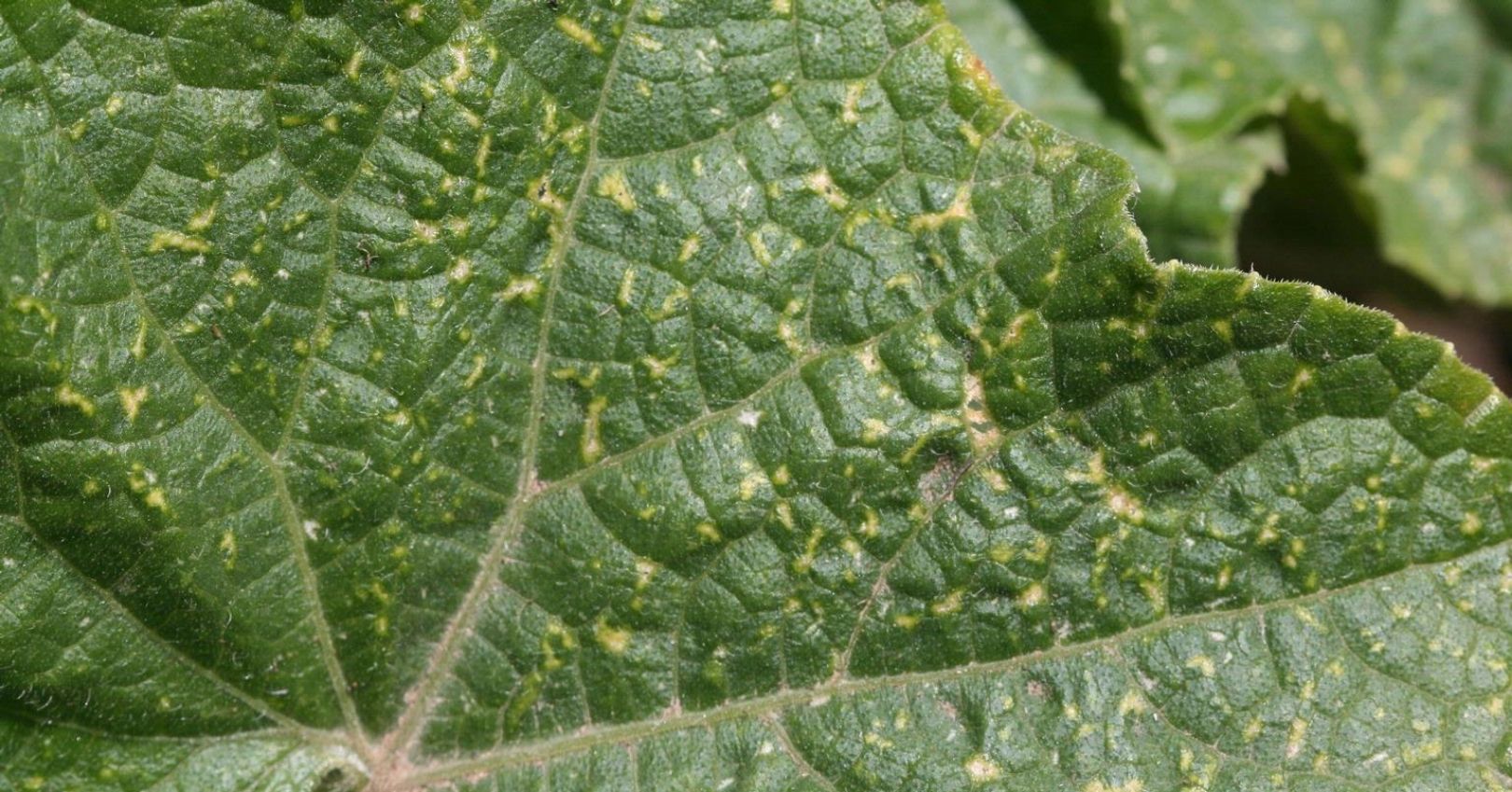
Thrips
Thrips
Pathogen:
Insect
Type:
Risk:
HIGH





DESCRIPTION
Pathogen description
Thrips (Thysanoptera) are small, elongated insects that affect a variety of crops, including cucurbits. Thrips feed by scraping the surface of leaves, flowers and fruits to extract cellular juices, which can cause significant damage. Females lay eggs in plant tissue, and larvae emerge to feed. Thrips can complete their life cycle quickly, especially in hot, dry conditions, and can multiply rapidly in warm environments.
Disease description
Damage caused by thrips on cucurbits includes discoloration and silvering on the leaves, which can affect the photosynthetic ability of the plant. Additionally, thrips can damage flowers and fruits, causing deformation and scarring, which can negatively affect the quality of the harvest.
• Discoloration and silvering on leaves.
• Damage to flowers, which can cause deformation and loss of quality.
• Scars on the fruits, which can reduce their commercial value.
• General weakening of the plant and reduction in production.

TEMPERATURE AND HUMIDITY
20°C - 35°C
50% - 80%

VOIES DE TRANSMISSION
Flight of adults, contact with infected plants, eggs laid on leaves.

Chemical treatments
CONTROL
• ORANGE OIL 6% [SL] P/V
• ORANGE OIL 60g/L [ME] P/S
• AZADIRACTIN 1% (AS AZADIRACTIN A) [EC] P/V
• Azadirachtin 2.6% (AS AZADIRACTIN A) [EC] P/V
• CYANTRANILIPROL 20% [SC] P/V
• DELTAMETHRIN 2.5% [EC] P/V
• LAMBDA CYHALOTHRIN 10% [CS] P/V
• PYRETHRINS 4% (PYRETHHRINE EXTR.) [EC] P/V
• POTASSIUM SALTS OF FATTY ACIDS C14-C20 48% [EW] P/V
• CHROMATIC TRAP
• ADHESIVE TRAP
Treatments authorized in organic farming
• ORANGE OIL 6% [SL] P/V
• ORANGE OIL 60g/L [ME] P/S
• AZADIRACTIN 1% (AS AZADIRACTIN A) [EC] P/V
• Azadirachtin 2.6% (AS AZADIRACTIN A) [EC] P/V
• LAMBDA CYHALOTHRIN 10% [CS] P/V
• PYRETHRINS 4% (PYRETHHRINE EXTR.) [EC] P/V
• POTASSIUM SALTS OF FATTY ACIDS C14-C20 48% [EW] P/V
• CHROMATIC TRAP
• ADHESIVE TRAP
Biological control
• BEAUVERIA BASSIANA (STRAIN ATCC 74040) 2.3% (2.3X10E7 VIABLE SPORES/ML) [OD] P/V
• BEAUVERIA BASSIANA (GHA STRAIN) 22% (4.4 x 10E10 CONIDIAS/G) [WP] P/P
• BEAUVERIA BASSIANA strain PPRI 5339 8% (8 X 10E12 CFU/L) [OD] P/P
• PAECILOMYCES FUMOSOROSEUS (STRAIN FE 9901) 18% (2 X 10 E9 CFU/G) [WP] P/P
• STEINERNEMA FELTIAE (Parasitoid and predatory nematodes)
• CHRYSOPERLA CARNEA (Parasitoid and predatory insects)
• HETERORHABDITIS BACTERIOPHORA (Parasitoid and predatory nematodes)
• METARHIZIUM BRUNNEUM strain Ma 43 10.5% [OD] P/V
• AMBLYDROMALUS LIMONICUS (Parasitoid and predatory mites)
• MACROCHELES ROBUSTULUS (Parasitoid and predatory mites)
• MACROLOPHUS PYGMAEUS (Parasitoid and predatory insects)
• TRANSEIUS MONTDORIENSIS (Parasitoid and predatory mites)
• AMBLYSEIUS SWIRSKII (Parasitoid and predatory mites)
• NEOSEIULUS CUCUMERIS (Parasitoid and predatory mites)
• ORIUS LAEVIGATUS (Parasitoid and predatory insects)
Preventive treatments
• BEAUVERIA BASSIANA (STRAIN ATCC 74040) 2.3% (2.3X10E7 VIABLE SPORES/ML) [OD] P/V
• BEAUVERIA BASSIANA (GHA STRAIN) 22% (4.4 x 10E10 CONIDIAS/G) [WP] P/P
• BEAUVERIA BASSIANA strain PPRI 5339 8% (8 X 10E12 CFU/L) [OD] P/P
• CHROMATIC TRAP
• ADHESIVE TRAP
• Practice good weed management to eliminate possible alternative hosts.
• Maintain a regular monitoring program to detect and treat the infestation early.
• Use colored sticky traps to catch adults and monitor their presence.
• Promote natural enemies such as predatory mites and parasitic wasps to control the thrips population.
• Use specific insecticides following local recommendations when necessary.
• Avoid excessive use of insecticides to protect the natural enemies of thrips.
Recommendations
*The recommended treatments are recommendations based on the authorities' databases and do not replace in any way the guidelines established by the legislation of each country.





